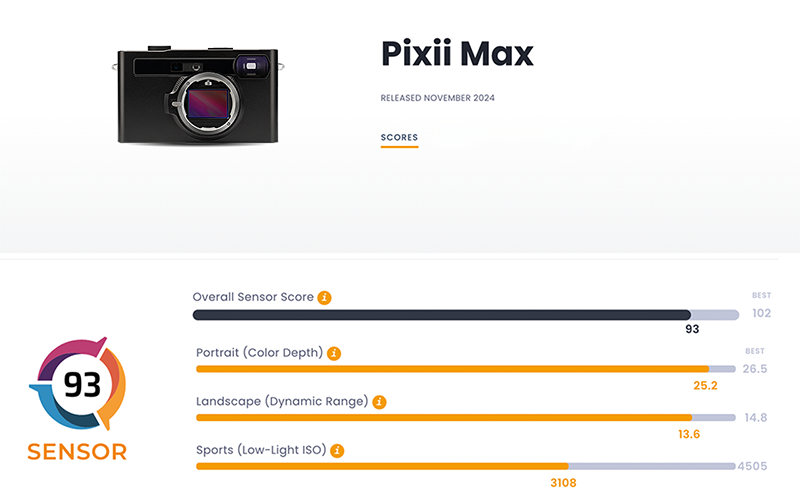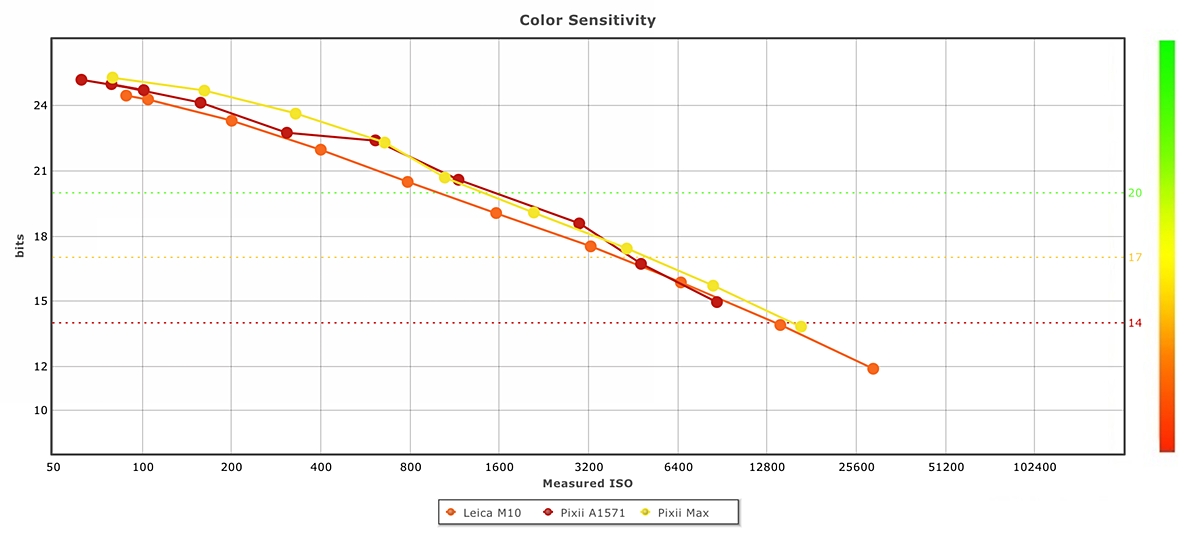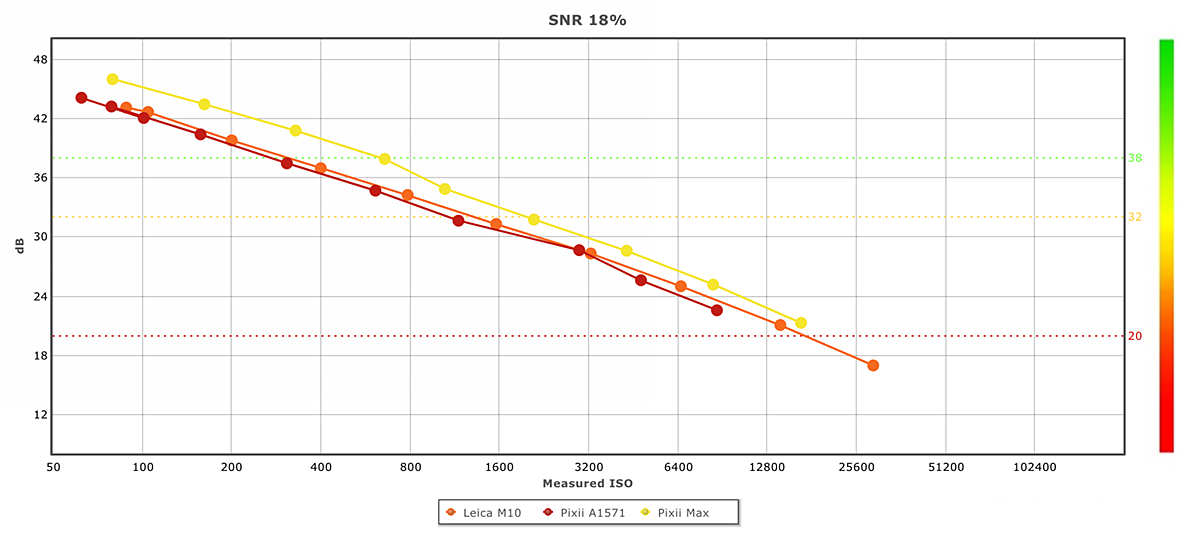The French camera manufacturer Pixii has announced the Pixii Max (Model A3410), a full-frame 35mm model and follow-up to the original APS-C Pixii (Model A1571) and later Pixii+ (Model A2572+) models. With the Pixii+ remaining in the line-up, Pixii now offers two compact rangefinder cameras with different-size sensors featuring Leica M-compatible lens mounts.
Housed in a two-piece aluminum body with styling familiar to the APS-C models, the Pixii Max features a new full-frame 24.5 MP BSI-type CMOS sensor. Pixii has paired this with a 64-bit quad-core processing engine, enabling a sensitivity range of ISO 100-25,600. The camera features an electronic shutter ranging from 2 seconds to 1/32,000. However, maximum continuous shooting is limited to just one frame per second. The camera eschews video, though we suspect that won’t cause concern with those looking for a more traditional film-like experience.
Like the previous Pixii models, the Pixii Max is a rangefinder camera with an optical viewfinder. As such, it features a new viewfinder to cover the larger sensor and incorporates backlit LED frames for 28- and 35-mm focal lengths. While there’s a top-plate LCD, there’s no rear display, so some menu options are displayed in the viewfinder, as well as shutter speeds, ISO settings, and exposure compensation. For more control over the menu settings, the Pixii app allows you to view captured images directly on your mobile via Bluetooth or USB-C.
The camera also adopts hard-wired internal memory instead of removable memory cards. Two models are available: one with 32 GB and the other with 128 GB. Files can be saved as one of two Raw file formats, DNG and mono DNG, the latter without color information from the color filter array (CFA), plus there’s the usual in-camera JPEG option. If the internal memory isn’t enough, images can be saved to a flash drive via the camera’s USB-C port. The same connection also allows in-camera charging, though the battery can be removed and charged separately.
The Pixii Max is available in Matte Black or Space Gray finish from $4499/3999€ for the 32 GB model, rising to $4799/4249€ for the 128 GB version.
Key specifications
- 24.5 MP full-frame 36x24mm BSI CMOS sensor
- Sensitivity ISO ISO 100-25,600
- Optical viewfinder with rangefinder
- Frame lines for 28/35mm
- M-mount compatibility
- Manual focus only
- Electronic shutter 2 seconds to 1/32,000
- DNG, Mono DNG, JPEG
- Bluetooth, USB-C/Wi-Fi 802.11ac
- Built-in memory, 32 or 128GB (depending on model)
Overall performance
 Click on the score chart above to open the Pixii Max product page.
Click on the score chart above to open the Pixii Max product page.
The full-frame 24.5 MP Pixii Max BSI CMOS sensor achieved an overall score of 93 in our tests. That score puts it in 11th position in our sensitivity ranking for all sensor sizes, well above the older, now discontinued 24 MP Leica M10 but somewhat behind the 60 MP Leica M11 rangefinder. The 93-point rating places the sensor performance on the same level as the Canon EOS R8 and Sony a9II.
It also adopts the leading position for Pixii cameras as the highest-scoring Pixii sensor, albeit, as a new company, being still somewhat limited in models. While the Pixii Max has improved performance in every metric, it is especially noticeable in low-light performance. The subtle variations in color depth and dynamic range suggest that the Pixii Max model demonstrates a marginally superior ability to discriminate colors and contrasts, particularly at the base ISO setting.
It’s also worth mentioning that from our tests, the Pixii Max now has ISO sensitivity values that measure much closer to the actual camera settings (manufacturer’s settings). When we tested the original Pixii A1571, the measured ISO values were noticeably lower than those set on the camera when compared to rivals, much like the Leica M10. Many manufacturers adopt this approach to protect the highlights, but if there’s too much disparity between the measured value and the manufacturer’s settings, it can result in noticeable underexposure.
At its native ISO 100 (ISO 80 measured) base setting, the Pixii Max has a solid result for color depth and dynamic range, peaking at 25.2 bits and 13.6 EV, respectively. However, it is in our low-light ISO (Sports) category, where the larger sensor is preferred over the smaller APS-C size unit in the original Pixii. In this evaluation, the Pixii Max achieved a computed value of ISO 3108.
In-depth comparisons
In this write-up of sensor performance, we’ve compared the Pixii Max with its closest competitor in terms of price, resolution, and camera type, the now-discontinued 24 MP Leica M10 rangefinder. While no longer a current model, it’s available secondhand at a similar price to the Pixii Max. The newer 60 MP Leica M11 sensor is a better performer (see here for details), however, at around $8999/8350€, it’s substantially more expensive and, therefore, quite a different proposition altogether. We’ve also taken this opportunity to compare it with the original APS-C size 26 MP Pixii A1571 to see where the benefits lie in sensor performance between the two.
Portrait (color depth)
The various color differences or gradations are represented by the respective camera’s color depth, which is measured in “bits’ at each ISO setting, hence the term color sensitivity. The higher the value, the better the color discrimination, which is an advantage, especially when photographing portraits.
Against the original APS-C BSI-type sensor in Pixii A1571, the new full-frame Pixii Max performs similarly despite the difference in sensor size. Both have similar peak values at base ISO (25.2 compared with 25.1 bits). However, the Pixii Max has slightly better color discrimination over ISO 200 – 400, differing by around +0.6 bits. After that, from ISO 800 up, the two return similar values.
The Pixii Max performs favorably against the Leica M10, which, perhaps unsurprisingly, is showing its age somewhat in our tests. Measured sensitivity values in the Leica are, by and large, -1 EV behind the manufacturer’s settings. While this tends to improve the test results, it may lead to underexposure without any correction applied. At the base setting of ISO 100 and at ISO 200, the Leica M10 is around -0.3 bits behind the more modern Pixii Max sensor, with that falling to around -0.5 bits or so over ISO 400-800. At higher sensitivity settings, the two handle color similarly.
Ultimately, the Pixii Max handles color well and may reveal higher color accuracy and detail in color-critical situations where perception is essential, such as when photographing portraits or scenes with complex color gradation.

Landscape (dynamic range)
The Landscape score refers to the sensor’s dynamic range, which is a measure of how well a camera’s sensor can record details in the brightest and darkest elements within a scene. Measured in EVs, the wider the range, the better the camera sensor can handle bright highlights and deep shadows, making it a highly desirable capability, particularly when photographing under tricky lighting conditions. The dynamic range falls as ISO is increased, so knowing the range at the higher ISO settings used by action or street photographers, in this case, is equally relevant.
At base ISO (ISO 100), the Pixii Max has a maximum dynamic range of 13.6 EV, which is practically the same as the smaller APS-C BSI-type CMOS sensor in the Pixii A1571 (13.5 EV). However, it’s interesting to note that the latter model’s lower base is ISO 80 (manufacturer’s setting) and measures an even lower ISO 63. Interestingly, the Pixii A1571 has marginally more dynamic range at ISO 200 (13.4 EV) than at ISO 100 (13.2 EV) as the former has a lower measured ISO than the latter.
The Leica M10 sensor has a virtually identical maximum dynamic range at the base (ISO 100) as both the Pixii Max and the original Pixii A1571, measured at 13.2 EV. However, as the Leica shares a similar low-sensitivity strategy with the original Pixii A1571, this results in more or less the same dynamic range at ISO 200 but a slight increase at ISO 400 of around +0.4 EV. At higher ISO levels, the result of the same approach in the Pixii A1571 is even more noticeable at ISO 1600 (manufacturer’s setting), where a second gain maintains the dynamic range at the same level as ISO 800 at around 12 EV. When set to the same ISO 1600, the Pixii Max, on the other hand, measures 10.6 EV, and the Leica M10 is around the same value. While this should result in more consistent exposure levels than the Pixii A1571, the slight skewing of the sensitivity in the earlier model favors it in terms of improved dynamic range.
Sports (low-light ISO)
The Low-light (Sports) score is a valuable metric for evaluating the visual quality of files from the sensor, as it considers how noise affects dynamic range and color depth. Quality standards set by our technicians are used to ascertain a maximum but theoretical ISO value while meeting those standards for noise, dynamic range, and color. This computed value is especially pertinent for low-light sensor performance and is particularly of interest to Pixii’s target audience, that’s to say, street and travel photographers.
At the 30 dB level, where we compute the ISO value, the Pixii Max is capable of producing cleaner, more color-accurate images that are around +1.25 EV ahead of the APS-C size sensor in the Pixii A1571. This is due to the previously mentioned method of adopting a lower measured ISO than the manufacturer’s setting. In turn, the Leica M10 sensor is around -0.6 EV behind the Pixii Max and around +0.6 EV, better than the original APS-C Pixii. At least that’s when normalized to 8 MP (equivalent to a 12×8 inch print at 300 dpi). When viewed on a monitor, the difference in noise levels is more noticeable.
Conclusion
Independent camera manufacturer Pixii SAS merits high praise for introducing a full-frame rangefinder camera to exploit the full field of view of the extensive range of M-mount lenses available. The Pixii Max has a 24 MP resolution BSI CMOS sensor with excellent color discrimination and a wide dynamic range, over 13.5 EV at its maximum. Additionally, the inclusion of a dedicated monochrome DNG mode offers a more analog-inspired shooting experience, likely to appeal to photography enthusiasts. The sensor performs better than the (now discontinued) Leica M10 while also outperforming the class-leading APS-C sensor in the Pixii A1571, especially in low-light levels. While the newer, high-resolution Leica M11 is a superb performer, it’s quite pricey in comparison. With its relatively simple operation and convenient connectivity, the Pixii Max, on the other hand, will be highly attractive for street and travel photographers looking for a more accessibly priced option.
In this review, we have mentioned the Pixii Max’s most relevant rivals from other brands. As usual, you can compare it with these and with other models and create your own comparisons and in-depth analyses using our interactive image sensor ranking tool.










